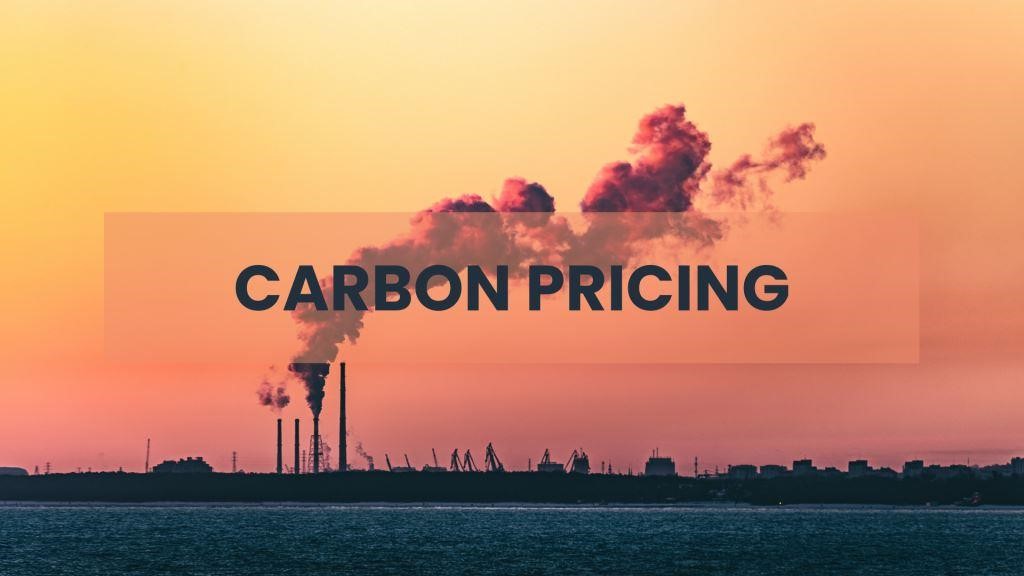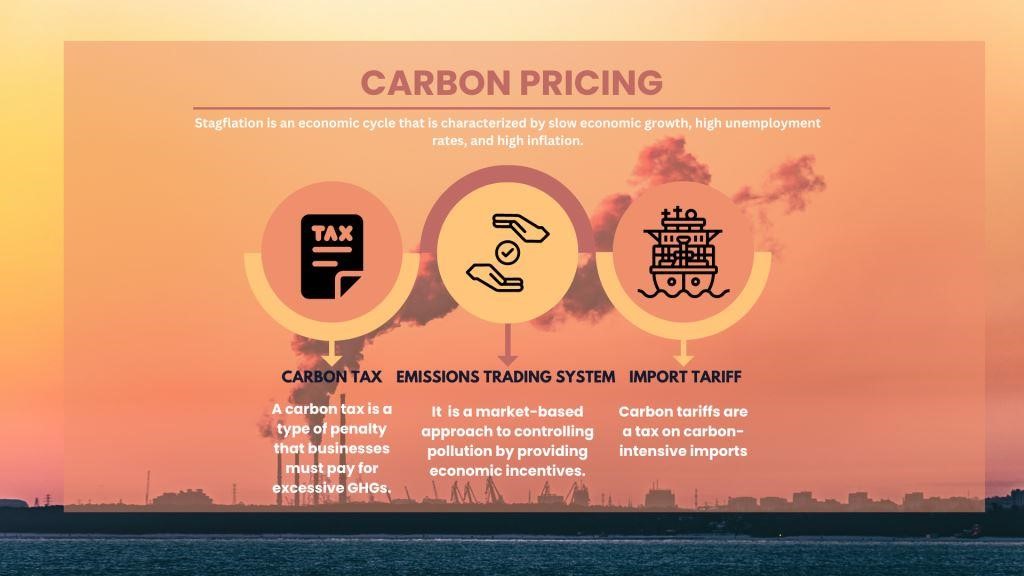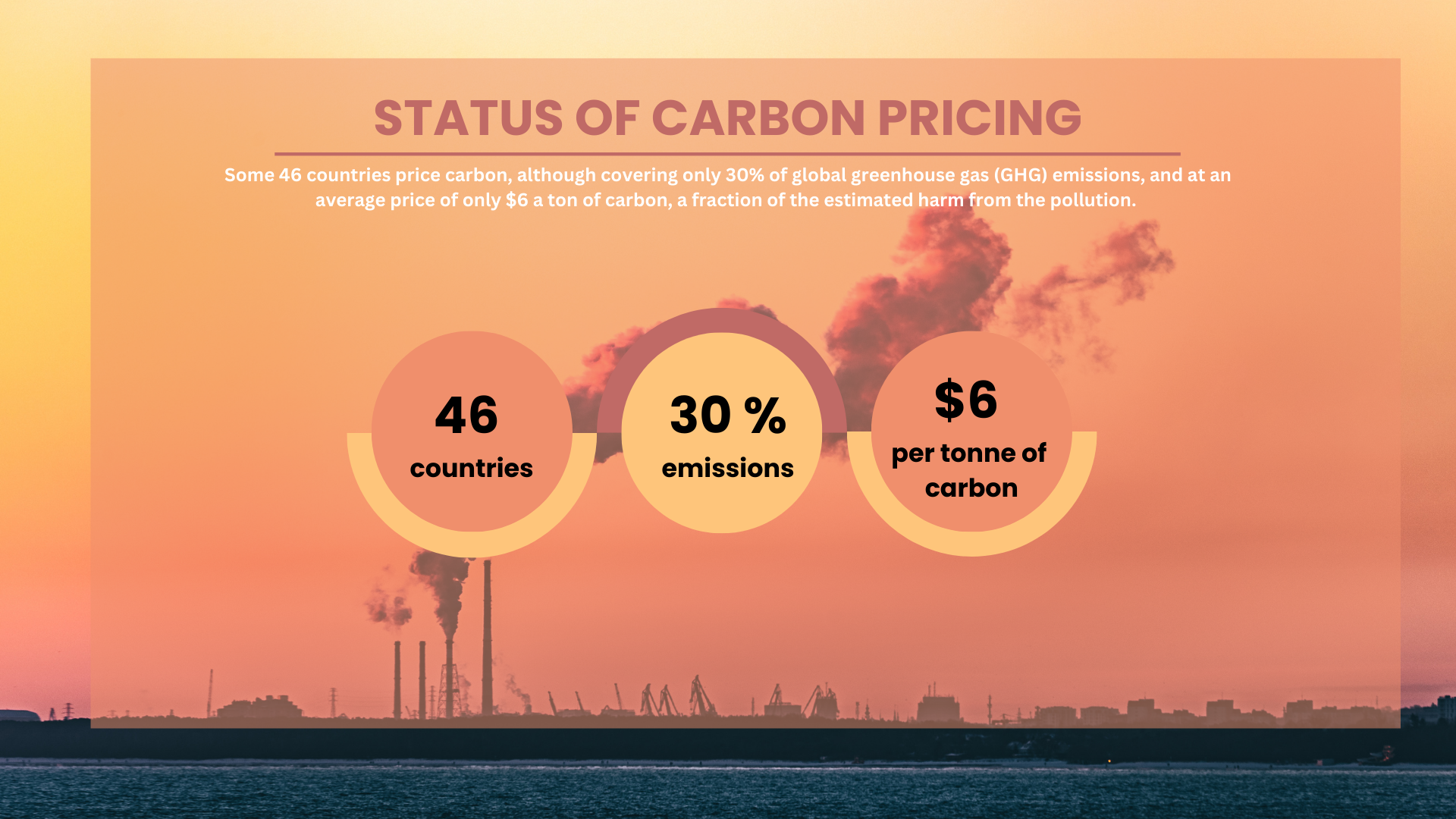04 Apr 2023 CARBON PRICING
CARBON PRICING
This article covers “Daily Current Affairs” and the topic details Carbon Pricing. With the relentless emission of carbon to drive industries and economic growth, it is necessary to impose a check on the emissions. This can be done by pricing carbon effluent to disincentivize and reduce the emission of greenhouse gases. The topic “Carbon Pricing” has relevance in the Environment section for the UPSC CSE exam
Relevance of Carbon Pricing for the UPSC CSE Exam
For Prelims:
What is Carbon Pricing?
Types of Carbon Pricing?
Provisions of Carbon Pricing in the UNFCCC.
For Mains:
GS 3: Environment
Need for Carbon Pricing
Significance of Carbon Pricing
Challenges Associated with Carbon Pricing
What is Carbon Pricing?
Carbon pricing is a market-led mechanism to tax carbon-releasing effluents to discourage the relentless emissions of Greenhouse Gases. It is like imposing an explicit price on the emission of Greenhouse Gases (GHGs) which are contributing majorly to Climate Change phenomena.

Details on Carbon Pricing
What is the need for Carbon Pricing?
Carbon pricing is needed to keep a check on the release of greenhouse gases which are the main contributors to Climate Change. The need for carbon pricing can be described below:
- Capturing the external costs of emitting carbon: It is a monetary approach to capture the negative externalities of emissions. This can help one know the source and quantum of emissions.
- Shifting the responsibility of emissions to the polluter and not the public: This way the polluter can seek ways to reduce the emissions or pay a higher price for the emissions. Since this will not be commercially viable thus can induce changes in the patterns and methods of working in the industry.
- The incentive to shift from a carbon-releasing model to a sustainable model: The price signal induced as a result of carbon pricing can bring a behavioral change in the working of the industrial processes.
What are the types of Carbon Pricing models?
- Carbon Tax: A carbon tax is a type of penalty that businesses must pay for excessive GHGs.
- Examples: The countries which are adopting this method are Korea and Singapore.
- Emissions trading system: It is a market-based approach to controlling pollution by providing economic incentives.
- Examples: The countries which are adopting this method are the European Union and China.
- The import tariff on carbon-rich products: Carbon tariffs are a tax on carbon-intensive imports
- The EU is proposing this model to tax those imports which have been produced through carbon-releasing processes.

Status of Carbon Pricing
What is the status of Carbon Pricing in the world?
Some 46 countries price carbon, although covering only 30% of global greenhouse gas (GHG) emissions, at an average price of only $6 a ton of carbon, a fraction of the estimated harm from the pollution.

Status of Carbon Pricing
WWhat is the Carbon Pricing mechanisms in the Paris Agreement?
The Paris Agreement was a collaborative approach by the nations to offset the impacts of Climate Change. Carbon pricing forms an important pillar in this effort. The mechanisms as noted under the Paris Agreement are as follows:
- Article 6.2: International Trading emission reduction credits across borders to combat the impact of climate change beyond the domestic region.
● Article 6.4: This provision allows for offsetting through the trading of emission reduction credits.
● Article 6.5: To avoid double counting of carbon emissions. This aims to avoid discrepancies in the counting of the carbons and not dilute the responsibility of the polluter.
What is the significance of Carbon Pricing?
The significance of carbon pricing lies in the following ways:
- Potential to address the urgent issue of climate change: Carbon dioxide and other greenhouse gases are the main drivers of climate change, and reducing their emissions is critical to preventing the worst impacts of global warming. By putting a price on carbon, carbon pricing can create a market signal that
- Inducing behavioral change in business strategies and processes: This approach incentivizes businesses and individuals to reduce their emissions and invest in cleaner technologies.
- Generation of revenue and employment: It can also generate revenue that can be used to fund climate mitigation and adaptation efforts. Investments in clean technologies also open new avenues of employment.
What are the challenges associated with Carbon Pricing?
- The practicality of Carbon pricing: Carbon pricing can be practically difficult to implement, as it can lead to higher prices for consumers and businesses.
- Uneven distribution of costs and benefits: Depending on how a carbon pricing policy is designed, it can result in some industries or individuals paying more than others. This can create economic and social disparities and may make it difficult to gain broad public support for the policy.
- Administrative complexity: Carbon pricing policies can be complex to design and implement, particularly in the case of cap-and-trade systems.
- Risk of carbon leakage: Carbon leakage refers to the phenomenon where businesses relocate to jurisdictions with lower carbon pricing, resulting in no net reduction in emissions.
- Impact on competitiveness: Depending on how a carbon pricing policy is designed, it can impact the competitiveness of certain industries. This is particularly relevant for highly energy-intensive industries, as they may face higher costs relative to their competitors in jurisdictions without carbon pricing.
The way forward: Carbon pricing is an important tool for reducing greenhouse gas emissions, but it is not without its challenges. Addressing these challenges will be critical for ensuring that carbon pricing policies are effective, equitable, and politically feasible.
Source:
Get Daily Current Affairs from Yojna iAS


No Comments